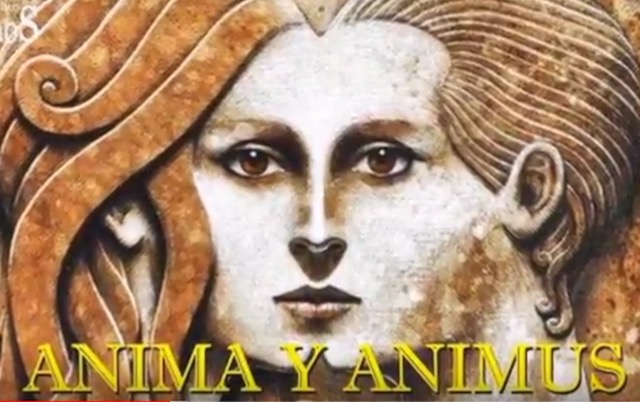Everywhere I look, I see myself.
We are always looking for ourselves in other people, especially in romantic relationships. We either want our identity to be validated or affirmed in some way (usually found in acquaintances and social companionship), or we are seeking out some missing piece of ourselves in an attempt to find completeness (usually found in close friendships and romantic relationships).
I have been interested for a long time in understanding the relationship between the masculine and the feminine—how these seemingly divergent forces can possibly be made to flow in accordance with each other. Carl Jung, one of the founders of analytical psychology, discusses this in his portrayal of the animus and the anima (from the book, Man and His Symbols), the psychological components of the masculine and the feminine within each and every one of us.
I should first say that when I speak of the masculine and the feminine, I am not necessarily talking about men and women; rather, I am discussing the parts of the psyche that correspond to masculine and feminine traits. Men can have more feminine traits and women can have more masculine traits; that goes without saying. What I mean to talk about here is the underlying ethos of the masculine and the feminine and the universal relationship between them.
Here is Jung’s depiction of the anima:
“The anima is the personification of all feminine psychological tendencies in a man’s psyche, such as vague feelings and moods, prophetic, receptiveness to the irrational, capacity for personal love, feeling for nature, and his relation to the unconscious. In its individual manifestation the character of a man’s anima as a rule is shaped by his mother.”
The anima represents the female force within all of us, that which connects us with nature and the unconscious. This energy can manifest itself in a number of different ways, depending most often on the quality of our relationship with our mother. The more active of a conscious relationship that we have with the anima, then the more constructive it will be in our development as human beings.
If the anima is repressed, which often is the case because of the very limited male stereotypes in this culture, then it will come to express itself in deeply destructive and unhealthy ways; symbolically representing the wrath of nature, rather than the innate beauty and grace of Mother Earth. A few examples of this would be: a sense of victimhood, the idealization of women, pseudo-intellectual effeminate traits, erotic fantasies, and maybe the most destructive of them all is the projection of our infantile desires onto women and the inevitable anger that goes along with their failure to meet these expectations.
Jung gives the example of a negative manifestation of the anima, one that I actually happen to know quite well.
“All of these examples of the anima have the same tendency that we observed in the shadow: That is, they can be projected so that they appear to the man to be the qualities of some particular woman. It is the presence of the anima that causes a man to fall suddenly in love when he sees a woman for the first time and knows at once that this is ‘she.’ In this situation, the man feels as if he has known this woman intimately for all time; he falls for her so helplessly that it looks to outsiders like complete madness.”
I found myself in a very similar situation quite recently. A good friend of mine had become a projection of my inner anima after a brief romantic stint, and it resulted in an implosion of our entire relationship. She came to represent what was missing inside of myself, and rather than address that emptiness, I projected it onto her and made it seem as though there was some deficiency on her end for not being able to fulfill my unrealistic expectations. It has taken much personal work to fully come to terms with this, and Jung outlines the quality of this work in the following quote:
“A bearable solution to such a drama can be found only if the anima is recognized as an inner power. The secret aim of the unconscious in bringing about such an entanglement is to force a man to develop and to bring his own being to maturity by integrating more of his unconscious personality and bringing it to his real life.”
We must cultivate a conscious relationship with both the feminine and the masculine within ourselves in order to be healthy and effective human beings, and when this balance is not struck then we will compensate for this absence through some form of projection or externalization. I had been taken over by my repressed anima, and this expressed itself through the collapse of a meaningful friendship.
The strange thing about the whole situation was that I knew I was wrong the entire time, but I couldn’t help but express my own bitterness and resentment for what I saw as her failures in our interactions. I wanted to be heard, even though my thoughts were broken and my feelings were depraved. Maybe if I had a deeper understanding of the anima, the feminine energy within my own being, then I would’ve had the presence of mind to recognize that I was the one that was more at fault in the situation.
Much of the work that I am doing now has come out of this interpersonal disaster, and has led to a much broader inquiry into my own nature and the nature of my anima. Such thinkers as Carl Jung, Simone De Beauvoir, and Virginia Woolf, among others, have been immensely helpful in this process for me.
I intend to write an upcoming piece on the animus, the male force within all of us, so that we can delve even more deeply into this inquiry of the relationship between the masculine and the feminine and perhaps get a better sense of how to embody both of these energies simultaneously without conflict.
~
https://www.youtube.com/watch?v=I0nQelI8hx8&t=34s
Relephant:
39 Ways to Cultivate the Habit of Femininity.
Reclaiming the True Power of Femininity.
~
~
Author: Samuel Kronen
Image: YouTube
Editor: Travis May
Copy Editor: Yoli Ramazzina
Social Editor: Waylon Lewis











Read 31 comments and reply